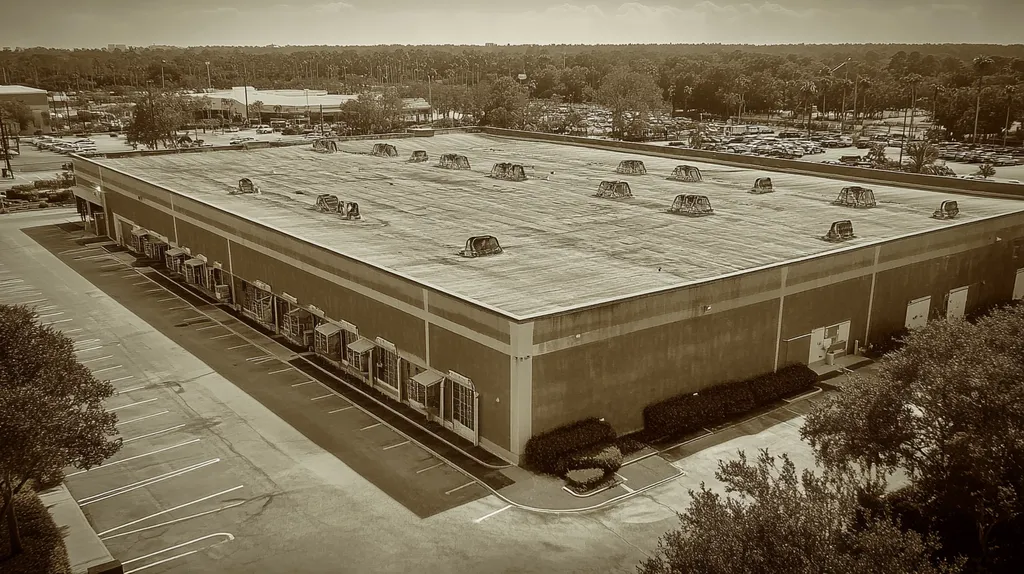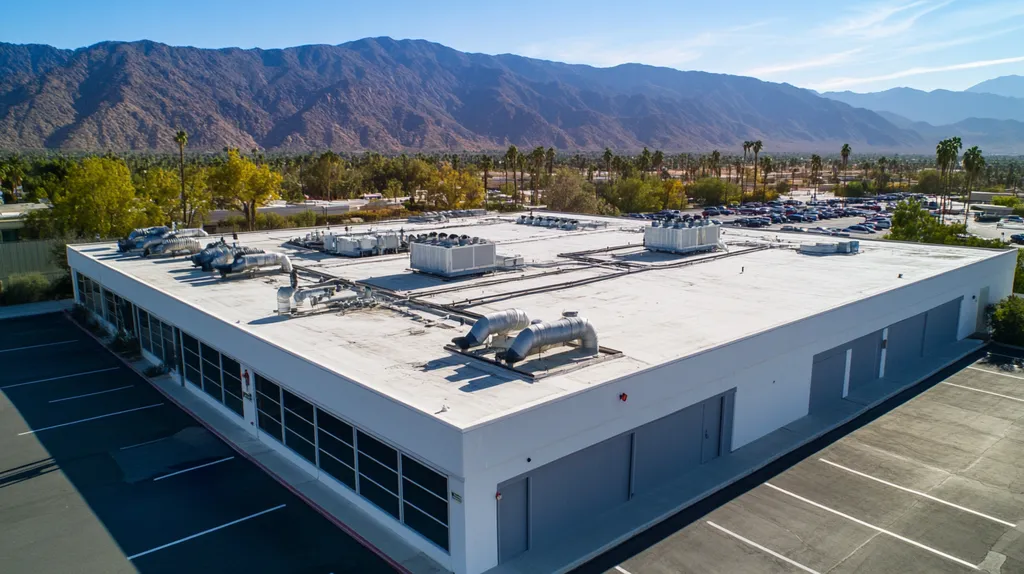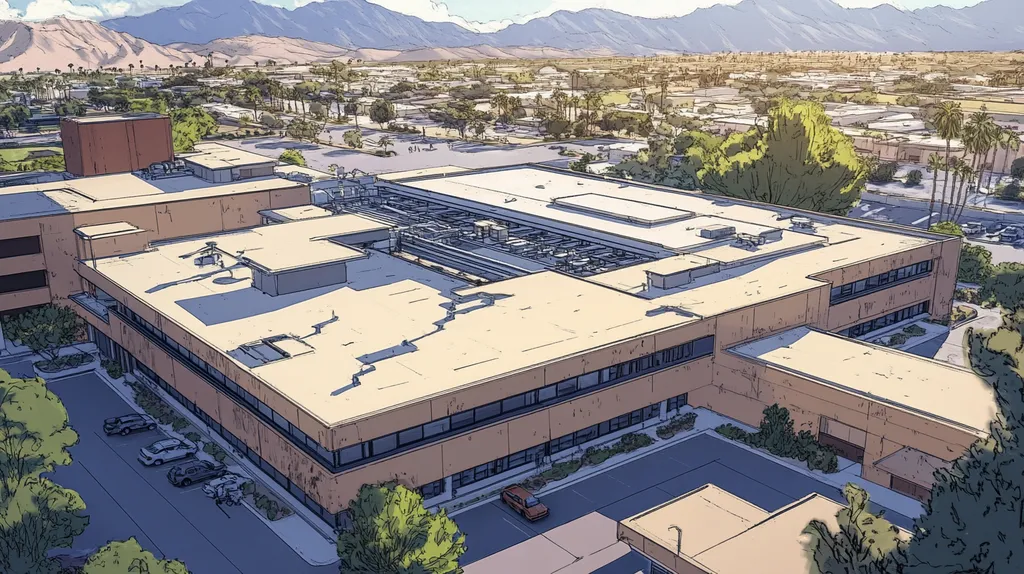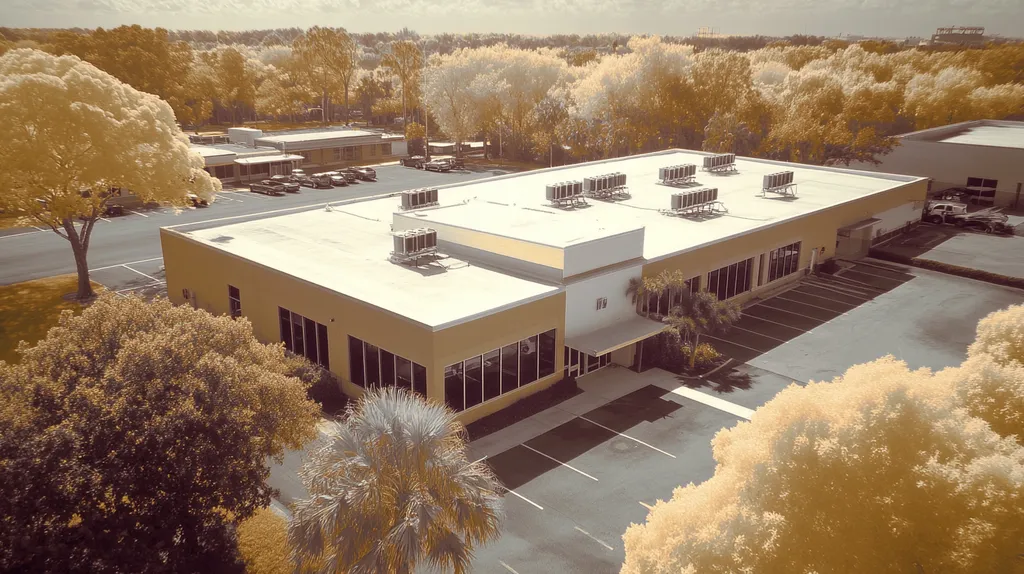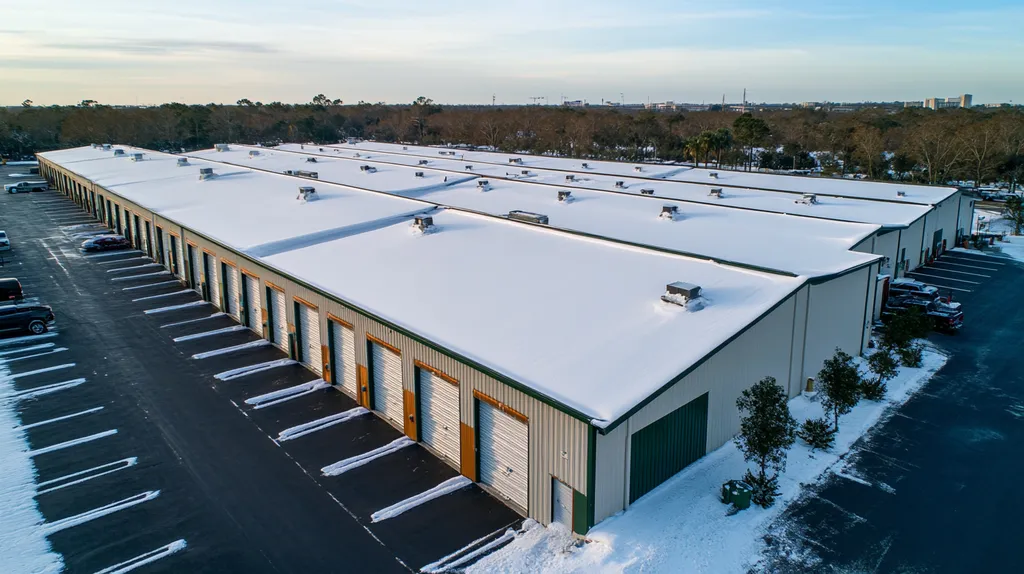Welcome to today’s Battle Royale featuring two roofing heavyweights: “Safety Harnesses” in the east corner versus “Safety Nets” in the west!
Tonight’s showdown pits these contenders against each other across six punishing rounds designed to test every aspect of their performance for Safe Commercial Roofing.
At stake? Millions in potential costs, decades of building protection, and the critical performance demands of modern commercial and industrial facilities.
Our professional judging panel will evaluate each round on technical merit, real-world performance, and value delivery. After all six rounds, we’ll declare our ultimate champion.
Ladies and gentlemen, facility managers and building owners… it’s time to rumble!
ROUND 1: INITIAL COSTS & INSTALLATION
When it comes to commercial roofing safety, the stakes couldn’t be higher. Falls from heights remain the leading cause of fatalities in construction, making proper safety equipment selection critical for both worker protection and business continuity. The Occupational Safety and Health Administration (OSHA) mandates specific safety measures for all roofing projects, emphasizing the importance of choosing between safety harnesses and safety nets carefully.
Material Expenses
Initial equipment costs represent a significant investment in any commercial roofing project. Basic safety harness systems, including the harness, lanyard, and anchor points, typically range from $200-400 per worker, with higher-end systems reaching $800.
Safety nets require a more substantial upfront investment, often starting at $2,000 for basic installations and increasing significantly based on roof size and complexity. This includes the netting material, support structures, and additional reinforcement points.
While nets have higher initial costs, they can protect multiple workers simultaneously without individual equipment needs. However, the clear cost advantage lies with safety harnesses due to their lower entry point and scalability.
ADVANTAGE: Safety Harnesses
Installation Complexity
Safety harness systems require proper anchor point installation and verification. Employers must ensure all platforms and working levels meet specific safety requirements, including proper planking and guardrail installation. (source: OSHA)
Safety net installation demands extensive preparation, including structural assessment, support system installation, and precise positioning. The process typically requires specialized crews and equipment, adding layers of complexity to the project.
The relative simplicity of harness system setup, combined with more straightforward inspection requirements, makes them significantly easier to implement than safety nets.
ADVANTAGE: Safety Harnesses
Project Timeline
Safety harness implementation typically adds minimal time to project schedules. Once anchor points are verified, workers can begin operations almost immediately, maintaining project momentum.
Safety net installation can extend project timelines by several days or even weeks. This includes time for structural modifications, net installation, inspection, and certification before work can commence.
The significant timeline difference between these options makes safety harnesses the clear winner for maintaining efficient project schedules.
ADVANTAGE: Safety Harnesses
ROUND 1 WINNER: SAFETY HARNESSES
ROUND 2: DURABILITY & LIFESPAN
The durability of fall protection equipment directly impacts worker safety and project success in commercial roofing. With falls remaining the leading cause of construction fatalities, equipment lifespan and reliability become critical factors. Understanding how different safety systems perform over time helps facility managers make informed decisions that protect both workers and investments.
Material Performance
Safety harnesses utilize high-strength synthetic materials designed for durability under demanding conditions. These systems typically maintain their structural integrity for 5-7 years with proper maintenance and storage, though environmental factors can accelerate wear.
Regular inspections can identify early signs of material degradation, allowing for timely replacement before safety is compromised. However, exposure to UV rays, chemicals, and moisture can significantly reduce harness lifespan, requiring more frequent replacements.
Safety nets demonstrate exceptional durability when properly installed and maintained. Made from industrial-grade materials, they can last up to 10 years or more in protected environments.
However, nets exposed to harsh weather conditions or subjected to frequent impacts may require replacement within 3-5 years. Their large surface area makes them more vulnerable to environmental damage and increases maintenance requirements.
ADVANTAGE: Safety Nets
Maintenance Requirements
Employers must ensure that all safety platforms and equipment meet specific inspection and maintenance standards, including regular verification of anchor points and connection systems. (source: OSHA)
Safety harnesses require frequent inspections of webbing, D-rings, and buckles. Their compact nature makes these inspections relatively straightforward, though documentation and tracking can become complex with multiple units.
Safety nets demand extensive maintenance protocols, including daily visual inspections and weekly detailed examinations. Their size and positioning often necessitate specialized equipment and personnel for proper maintenance.
The simpler maintenance requirements of harness systems make them more practical for most commercial roofing operations.
ADVANTAGE: Safety Harnesses
Replacement Costs
Safety harness replacement costs remain relatively predictable, with individual components replaceable as needed. This modular approach allows for targeted maintenance spending and helps distribute costs over time.
The complete replacement of damaged harnesses costs significantly less than net replacement, typically ranging from $200-800 per unit. This predictability helps facility managers budget effectively for safety equipment maintenance.
Safety net replacement involves substantial costs, often exceeding $2,000 for basic installations. The process requires specialized installation crews and may necessitate temporary work stoppages.
When considering long-term maintenance budgets and replacement cycles, safety harnesses offer clear financial advantages.
ADVANTAGE: Safety Harnesses
ROUND 2 WINNER: SAFETY HARNESSES
ROUND 3: PERFORMANCE FACTORS
In commercial roofing operations, performance factors can mean the difference between life and death. With falls accounting for 36% of construction-related fatalities, the effectiveness of fall protection equipment directly impacts worker safety and project completion. Understanding how different safety systems perform under real working conditions is crucial for making informed decisions about worker protection.
Ease of Use
Equipment that’s difficult to use properly increases the risk of accidents and workplace injuries. Safety harnesses require detailed knowledge of proper fitting techniques and constant awareness of anchor point locations, which can create cognitive overload during complex roofing tasks.
Workers must regularly check and adjust harness components throughout their shift, potentially leading to fatigue and decreased compliance. The complexity of proper harness use often results in workers taking dangerous shortcuts when rushing to complete tasks.
Safety nets, once properly installed, require minimal ongoing adjustment or worker intervention. Their passive protection system allows workers to focus entirely on their tasks without the distraction of equipment management.
ADVANTAGE: Safety Nets
Fall Protection Efficacy
OSHA mandates that commercial roofing equipment, including personal fall protection systems, must be inspected before each use and include proper anchor points and lifelines. Safety harnesses can effectively arrest falls when properly maintained and correctly worn, but their effectiveness depends entirely on worker compliance and proper attachment. (source: OSHA)
The individual nature of harness systems means that a single point of failure – whether equipment malfunction or user error – can result in a catastrophic fall. Even properly functioning harnesses can cause injury through sudden deceleration forces during fall arrest.
Safety nets provide consistent protection across large work areas without relying on individual worker action. Their ability to catch multiple falling workers simultaneously while distributing impact forces makes them highly effective at preventing injuries.
ADVANTAGE: Safety Nets
Mobility on the Roof
Worker mobility directly impacts both safety and productivity on roofing projects. Safety harnesses restrict movement patterns and working radius, often forcing awkward positions that can lead to fatigue and potential musculoskeletal injuries.
The constant need to reconnect to different anchor points as workers move across the roof creates productivity bottlenecks. These movement restrictions often tempt workers to overreach rather than properly reposition their harness connection.
Safety nets allow unrestricted movement within the protected area, enabling workers to maintain natural movement patterns. This freedom of movement results in better ergonomics and reduced physical strain during extended roofing operations.
ADVANTAGE: Safety Nets
ROUND 3 WINNER: SAFETY NETS
ROUND 4: MAINTENANCE REQUIREMENTS
Proper maintenance of fall protection equipment directly impacts worker safety and project liability in commercial roofing operations. Equipment failure due to inadequate maintenance remains a leading contributor to workplace accidents, making thorough inspection and upkeep protocols essential. Understanding the maintenance demands of different safety systems helps facility managers implement effective safety programs while controlling long-term costs.
Regular Inspection Requirements
Safety harnesses require comprehensive daily inspections of all components including webbing, D-rings, buckles, and lanyards. Each worker must verify equipment condition before every shift, creating significant time investment across larger crews.
These inspections must follow strict protocols to identify wear patterns, UV damage, and potential structural compromises. The frequency and detail of these checks adds considerable overhead to daily operations.
Safety nets require weekly systematic inspections focusing on mesh integrity, border ropes, and connection points. While less frequent than harness checks, net inspections often require specialized access equipment and multiple personnel.
ADVANTAGE: Safety Nets
Component Replacement
Safety harnesses feature modular components that can be replaced individually when wear is detected. This targeted approach allows for cost-effective maintenance without replacing entire systems.
However, tracking component age and replacement schedules across multiple harness systems requires robust documentation systems. Even minor damage often necessitates immediate component replacement to maintain safety compliance.
Safety nets typically require complete replacement when significant damage occurs, though minor repairs can extend service life. Their unified construction means fewer individual components to track but higher costs when replacement becomes necessary.
ADVANTAGE: Safety Harnesses
Storage and Protection
Safety harnesses demand controlled storage conditions to prevent material degradation. Each unit requires dedicated storage space away from chemicals, sunlight, and moisture that could compromise structural integrity.
The complexity of proper harness storage increases with crew size, requiring significant dedicated space and environmental controls. Improper storage can dramatically reduce equipment lifespan and reliability.
Safety nets, once installed, remain in place throughout project duration, eliminating daily storage requirements. This simplified approach reduces handling damage and storage-related maintenance issues.
ADVANTAGE: Safety Nets
ROUND 4 RESULTS: TIE
ROUND 5: SUSTAINABILITY CREDENTIALS
Environmental responsibility has become a critical factor in commercial roofing operations, with increasing pressure to reduce waste and carbon footprints. The sustainability impact of safety equipment extends far beyond initial production, affecting long-term environmental performance and operational efficiency. Understanding these impacts helps facility managers make environmentally conscious decisions while maintaining rigorous safety standards.
Environmental Impact
Safety harness systems primarily utilize synthetic materials and metals, with modern manufacturers increasingly incorporating recycled components. Their compact size and modular design result in minimal material waste during production and maintenance cycles.
Most harness components can be individually replaced and recycled, reducing landfill impact. The selective replacement approach allows facilities to maintain safety standards while minimizing environmental waste.
Safety nets require significantly more raw materials in their production and generate substantial waste when replacement becomes necessary. Their large surface area and integrated construction make recycling more challenging and often result in complete disposal when damaged.
ADVANTAGE: Safety Harnesses
Energy Efficiency
The warning line system requirements established by OSHA mandate specific material strengths and installation parameters, directly impacting the energy footprint of safety equipment. Warning lines must resist 16-pound forces and maintain 500-pound tensile strength, requiring energy-intensive manufacturing processes. (source: OSHA)
Safety harness production consumes less energy due to smaller component sizes and streamlined manufacturing processes. Their modular nature allows for efficient production and transportation.
Safety net manufacturing requires substantial energy input for material production, weaving, and reinforcement. The larger size and bulk of safety nets also increase transportation energy costs and storage requirements.
ADVANTAGE: Safety Harnesses
Material Lifecycle
Safety harnesses demonstrate superior lifecycle characteristics through their modular design. Individual components can be replaced as needed, extending the overall system lifespan while maintaining safety compliance.
The ability to upgrade specific components allows harness systems to incorporate sustainability improvements without complete replacement. This adaptability reduces waste and supports continuous environmental performance enhancement.
Safety nets typically require complete replacement when damaged or aged, creating significant material waste. Their fixed design offers limited opportunities for component replacement or sustainable upgrades.
ADVANTAGE: Safety Harnesses
ROUND 5 WINNER: SAFETY HARNESSES
ROUND 6: SPECIALIZED APPLICATIONS
Specialized roofing applications present unique challenges that demand careful consideration of fall protection systems. With 34% of roofing fatalities occurring during custom installations or unusual configurations, selecting the right safety equipment becomes critical. Understanding how different protection systems perform across specialized scenarios helps facility managers maintain both worker safety and project efficiency while meeting strict OSHA compliance requirements.
Unique Roofing Scenarios
Commercial roofing often involves complex architectural features, multiple penetrations, and varying pitch angles that create distinct safety challenges. Warning line systems must maintain specific distances and strengths, with lines positioned at least 6 feet from roof edges and capable of resisting 16-pound forces without failure. (source: OSHA)
Safety harnesses excel in these environments by providing precise control and adaptability. Their adjustable anchor points and variable-length lanyards allow workers to safely navigate complex roof features while maintaining continuous protection.
Safety nets, while effective for basic configurations, struggle with irregular shapes and varying roof heights. Their fixed installation patterns often leave gaps in protection around unique architectural features.
ADVANTAGE: Safety Harnesses
Repetitive Maintenance Tasks
Regular maintenance operations require frequent access to specific roof areas, often involving repeated movement patterns. These tasks demand safety systems that balance protection with operational efficiency.
Safety harnesses provide consistent protection while allowing workers to establish efficient movement patterns. Their personal nature enables technicians to develop muscle memory for safety procedures while maintaining productivity.
Safety nets require significant setup and adjustment for maintenance tasks, particularly when work areas change frequently. Their static nature can impede quick access to maintenance points and slow routine operations.
ADVANTAGE: Safety Harnesses
Weather-Sensitive Operations
Adverse weather conditions significantly impact roofing operations and safety system effectiveness. High winds, precipitation, and temperature extremes create additional risks that safety equipment must address.
Safety harnesses maintain consistent performance across varying weather conditions. Their direct attachment to structures provides reliable protection even in high winds, while their compact design minimizes weather-related wear.
Safety nets become particularly vulnerable during adverse weather. Wind forces can affect net tension and stability, while moisture accumulation can increase degradation rates and compromise material integrity.
ADVANTAGE: Safety Harnesses
ROUND 6 WINNER: SAFETY HARNESSES
AND THE WINNER IS…
After six grueling rounds of technical evaluation, we have our verdict…
In a commanding victory of 4 rounds to 1 (with one round tied), SAFETY HARNESSES emerge as our undisputed champion of commercial roofing fall protection!
The winner dominated early rounds with superior cost-effectiveness and installation efficiency, while maintaining its lead through exceptional sustainability credentials and specialized application performance. This versatile contender proved its worth across multiple critical categories that impact both worker safety and project success.
Yet our runner-up, Safety Nets, showed impressive strength in Round 3’s Performance Factors, demonstrating superior ease of use and unrestricted worker mobility. For projects requiring extensive coverage areas or situations where passive protection is paramount, safety nets remain a formidable challenger.
IMPORTANT SAFETY NOTE: Every commercial roofing project presents unique challenges based on building design, local weather conditions, and specific operational requirements. This analysis provides general guidance but cannot account for all variables. Always consult qualified safety professionals and roofing experts who can evaluate your specific situation before making final equipment selections.
Ladies and gentlemen, in the high-stakes arena of commercial roofing safety, remember: The true champion is the solution that best protects your workers while meeting your building’s unique demands. Choose wisely, and always keep safety in your corner!
FREQUENTLY ASKED QUESTIONS
Q. What are the initial costs for equipment on a commercial roof?
A. Safety harness systems generally range from $200 to $800 per worker. In contrast, safety nets start at around $2,000, depending on the roof size and complexity, making harnesses more cost-effective for most projects.
Q. How do safety harnesses and nets compare in terms of durability for an industrial roof?
A. Safety harnesses typically last 5-7 years with proper maintenance, while safety nets can last over 10 years if conditions are favorable. However, nets are more susceptible to environmental factors that may reduce their lifespan.
Q. Which system performs better in a commercial roofing context?
A. Safety nets offer advantages like minimal worker intervention and broad coverage. However, safety harnesses provide better adaptability and fall protection effectiveness based on how they are used and maintained.
Q. What are the maintenance requirements for safety equipment on a commercial roof?
A. Safety harnesses require daily inspections of all components, while safety nets necessitate weekly checks. The frequency and detail of inspections for both systems are essential for maintaining safety and compliance.
Q. How do sustainability credentials differ between safety harnesses and nets?
A. Safety harnesses generally produce less waste with modular components that can be replaced. In contrast, safety nets generate more material waste and often require complete disposal when damaged, making harnesses the more sustainable choice.
Q. Are safety harnesses suitable for specialized roofing applications?
A. Yes, safety harnesses are highly adaptable for specialized applications, providing precise control. Their adjustable features allow workers to safely navigate complex roofs, improving both protection and efficiency during operations.
Q. What regulatory compliance aspects should I consider for commercial roofing safety?
A. It’s essential to adhere to OSHA regulations, which mandate specific safety protocols for fall protection equipment. Regular inspections, proper installation, and worker training are crucial to ensure compliance and enhance safety on job sites.

